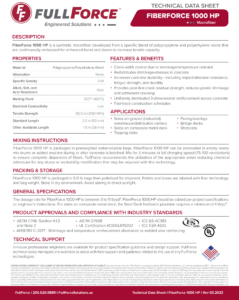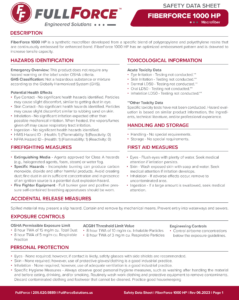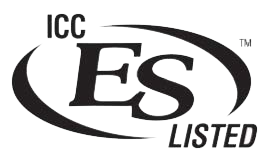FiberForce
1000 HP
General Information
FiberForce 1000 HP is a synthetic macro concrete fiber developed from a specific blend of polypropylene and polyethylene resins that are continuously embossed for enhanced bond. FiberForce 1000 HP has an optimized embossment pattern and is drawn to increase tensile capacity.
Additional Information
BATCHING
Truck Mixed (Dry Batched) Concrete
- Post-loading (i.e. Tail Loading): FiberForce [950, 1000HP] fiber reinforcement is collated and pre-packaged in degradable bags. Specifically, it is bundled with water-soluble PVA wrap, i.e. “pucked”. The collation of stiffer, longer fibers helps to facilitate better handling and mixing because the bundles disperse throughout the mix and then separate into individual fibers. The bags can be added after all the standard ingredients have been thoroughly mixed with the truck drum revolving at mixing speed. This typically occurs from the ready mixed concrete producers permanent scaffolding, a.k.a. “slump rack.” One common method for post-loading (tail loading) is for the driver to gather the required number of bags for the truck at the slump rack. Then back the concrete up to the point of discharge and add the bags of fibers to the mix. Once all fibers are added, start the drum and follow the mixing procedures outlined below. This helps to eliminate miscounting of the number of bags added to the truck.
- Preloading: It is NOT typically recommended to preload any fiber that is collated because preloading can prematurely remove the collation causing fiber balls. If preloading collated fibers is to be considered, strict attention from ready-mix truck drivers needs to be exercised, and we encourage pre-pour meetings.
Central Mixed (Wet Batched) Concrete
- Loading: It is typically recommended to post-load the fibers after the concrete has been discharged into the truck because typical central-mix plant configurations will limit the opportunity to add the fibers directly to the central mix drum. Please refer to dry batch concrete loading options above. If there is an opportunity to add fibers into the central mix drum, please consult with your FiberForce Technical Sales Manager for the best mixing procedures for your project.
MIXING
When fibers are added directly to the truck (either preloading or post-loading), mix for 5 minutes at full charging speed (75-100 revolutions) to ensure complete, uniform fiber dispersion. Slower agitation speeds during transport to the site are insufficient for proper fiber dispersion and should not be counted toward the fiber mixing time.
If fibers are added to central-mix drum, please discuss the appropriate mixing cycle length with your FiberForce Technical Sales Manager.
Check each truck for full dispersion of fibers prior to placement. If it appears that the fibers are balling, additional mixing at charge speed can help break up fiber balls.
Common causes of fiber balling:
- Truck drums with significantly worn-down blades have been used.
- The mixture is harsh with a high volume of coarse aggregate (more than 55% of the total combined aggregate by absolute volume) and not enough mortar.
- High volume percentages of macro synthetic fibers ( >0.33%) by volume have been used without compensating for the increased paste demand. FiberForce recommends the use of pre-construction trial mixes and the addition of a mid- to high-range water reducing admixture. Additional water should not be added as this could adversely affect the hardened concrete properties. For more information on adjusting the mix design of FRC, please see the Technical Bulletin titled “Mixture Proportioning for FRC.”
Get in touch
Physical address
Helena Industrial Park
545 Elm Street
Helena, AL 35080
Mailing address
P.O. Box 580
Helena, AL 35080
Send a message




 UL Certificate of Compliance
UL Certificate of Compliance